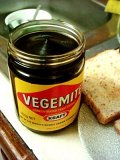Are we running out of oil? It’s a question that has vexed drivers the world over since the first major oil crisis three decades ago. Oil experts have been telling us for years that supplies are dwindling and that within another few decades the petrochemical legacy left by ancient life will have all but gone.
But, Eric Cheney economic geologist at the University of Washington thinks this notion is nonsense. “The most common question I get is, ‘When are we going to run out of oil,’ he says, “The correct response is, ‘Never!'” He says that there might come a point when we are paying $100 a gallon, that’s gallon, not barrel, but, he says, changing economics, technological advances and efforts such as recycling and substitution make the world’s mineral resources virtually infinite.
Is that a reasonable assumption? Recycling isn’t going to save us, it costs energy, and unless we have some kind of renewable power to drive the recycling “machines” that is almost always going to fall short of 100% efficiency and leave us with a net loss.
However, he does have a point about untapped oil deposits. Forty years ago, the technology did not exist to extract oil from tar sands, for instance, and organic matter or coal is now worth manufacturing. Of course, processing costs will rise, but that’s the price we will pay to drive our vehicles and power our industries.
“Mineral resources are vitally important to our industrial and service economy,” Cheney says, but speaking at the Geological Society of America annual meeting this weekend in collaboration with Andrew Buddington of Spokane Community College he will point out that gas prices today, adjusted for inflation, are about what they were in the early 20th century. Today’s prices seem inordinately high, he said, because crude oil was at an extremely low price, $10 a barrel, just eight years ago and now fetches around $58 a barrel and has been as high as $78.
As major economies, such as those in China and India, develop and are on the verge of greater demand for mineral resources because of increasing road use, he said, it is an opportune time for universities to train a new crop of resource geologists who can understand the challenges and help find solutions. He believes that popular but misguided notions about mineral resources might be hampering students from entering the field.
So that’s alright then. We can carry on pumping out exhaust gases to the contentment of our cars and concreting the countryside as long as we teach our students how to reach the unreachable.
 And you thought Brussels was crazy for banning bananas that were too curved, for forcing manufacturers to relabel brandy butter as “modified distilled wine spreadable fat product”, and for limiting pizzas to an eleven-inch standardised diameter only! Now, the US is searching Aussies coming into the country to make sure they’re not bringing that most infamous of products with them – Vegemite!
And you thought Brussels was crazy for banning bananas that were too curved, for forcing manufacturers to relabel brandy butter as “modified distilled wine spreadable fat product”, and for limiting pizzas to an eleven-inch standardised diameter only! Now, the US is searching Aussies coming into the country to make sure they’re not bringing that most infamous of products with them – Vegemite!